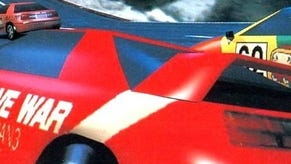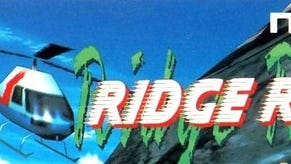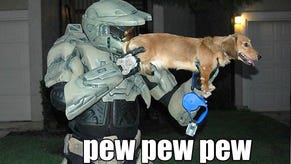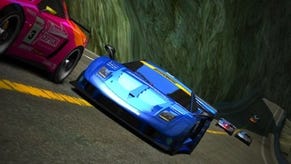Ridge Racer Vita Review
Dole position.
Somebody once leaked the code for the original Ridge Racer onto the internet. Not the code in the sense of a pirate version of Namco's seminal arcade racing game: rather, the source code, the written instructions of logic and maths that fired its primary-coloured cars around the track.
Overnight, the code became famous amongst game developers. It revealed that the handling model for the vehicles was written in just a handful of instructions. Today, Polyphony Digital and Turn10 toil for months recreating the intricacies of real-world racing car physics and handling, but Ridge Racer allowed us to soar around hairpins, drifting majestically, with an economy of logic that stunned contemporary game makers.
That economical DNA has served the Ridge Racer series well: a leaning towards simple thrills that has allowed Namco to launch a new version alongside the release of many new pieces of video game hardware since. So it is that a Ridge Racer accompanies the arrival of the PlayStation Vita. But while that riotous yet precise handling remains, the surrounding game structure is anything but orthodox, simple or, tragically, good.
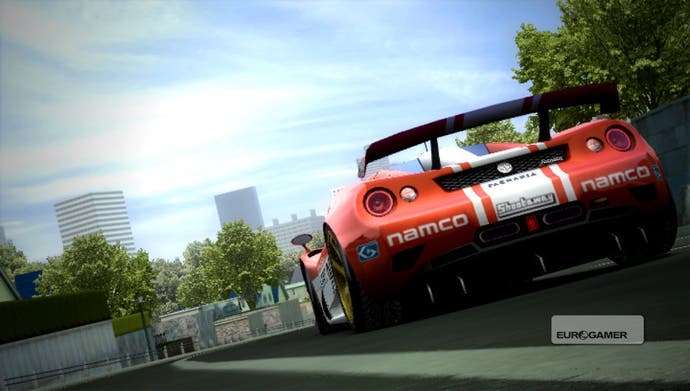
While the first game in the series was a product of its time, an arcade racer designed for insta-thrills to gobble up 50-yen pieces, this new Ridge Racer is a product appealing to its time. It is a racing game slotted within a social game framework that fails to engage or inspire on even the most basic levels.
You begin by choosing to side with one of four sponsors. This choice cannot be changed and locks you in to a community of other players who made the same choice. Rather like the second Steel Battalion, the aim of the game is to convert wins to points that feed into a grand global total for your side. Every time you complete a race, your winnings are uploaded to the servers and the overall rankings of the four sponsors are displayed as they jostle for pole position.
The concept of warring online factions is nothing new to games, although it's rarely been applied to the racing genre. But where the idea fails is in the lack of clear incentives or objectives. There appear to be no tangible benefits or rewards for being on the winning side at any given point, and there is no narrative set-up for the rivalry of the four teams.
As such, Namco's gamble in placing the full weight of Ridge Racer's emphasis on this online meta-game is a crippling mistake. There is no single-player campaign to work through away from the meta-game. Instead, you simply attempt the three tracks included in the game (or six if you claim the Gold Pass DLC for free before March 31st - see 'Ridge Racer Extended', left) as single, one-off races over and over, earning money and winning points as you do so, before being deposited back to the menu screen. There are no tournaments, no spot events, no clear incentive to keep playing other than improving your best time in Time Trial mode.

Another regretful decision has been to infect Ridge Racer's once pure, intrinsic reward structure with extrinsic RPG-esque levelling and car mods. As you 'level up' through completing races (the thresholds for these steps up are invisible) so all of the five cars available increase in speed. This switches the central aim of the game from mastery to mere persistence. No matter how good you are when you first start playing Ridge Racer, you will never beat the player who has spent more time with the game than you.
Machine Upgrades further upset the simplicity of Ridge Racers past. A garage shop offers various add-ons and additions to be installed in one of the three upgrade slots on your cars. These come in three different classes, and you can only install an upgrade of the relevant class in the respective slot. When you first start playing there's only one upgrade available to buy; adjacent options open up as you make your purchases.
Unforgivably, some slots (which must be purchased if you want to unlock the upgrades that sit behind them) contain no upgrade, just a simple "tip" on how to play the game. You earn around 100 credits for winning a race and no upgrade or empty slot costs less than 400 credits. Considering the number of tracks included in the game, the sheer number of times you must repeat the same race simply to unlock the first few upgrades is disheartening. It is, without question, the worst upgrade system seen in a mainstream video game in recent memory.

Multiplayer is split between synchronous and asynchronous competition. Online battles allow you to set up or join lobbies to race against up to eight other players in real time. Lobby owners can specify whether Nitro is allowed or disallowed, whether there's 'rubber banding' to increase the speed of lagging competitors, and whether the room is open to friends only or the public. In lobbies you can send messages to team-mates and rivals by selecting from a stock of pre-written phrases, but otherwise communication is locked down.
For the asynchronous side of things, you can download the ghost race data of almost anyone playing the game and race head-to-head against their best time. Problematically, thanks to the upgrade structure of the game, anyone above your current race level will have a faster car and far better upgrades, so it's only ever worth competing against racers of the same standard as you. But when looking for ghost data to download, you cannot filter by driver level, making finding a suitable opponent a painful trudge through menus (although the game claims you can do this, the feature wasn't working on our review build).
Play the game away from an internet connection and the vast majority of its features don't work, stymying the experience for players who own the Wi-Fi only version of Vita and want to play on the move. The overriding feeling is that this is a game designed by a team of arcade racing fans who have been told to introduce social online gameplay.
It's a cliché to claim that Japanese game designers don't understand how to do online elegantly (and one that games like Dark Souls and, less so, Monster Hunter do much to refute). But Ridge Racer's overarching structure lacks urgency, coherency and elegance. It is, in short, a mess.
It's a desperate shame as the car handling is as exhilarating as ever. Indeed, you'll be able to happily play the game for a couple of hours before the reality of the derelict superstructure becomes fully evident. This is one of the biggest disappointments of the system, and the year.
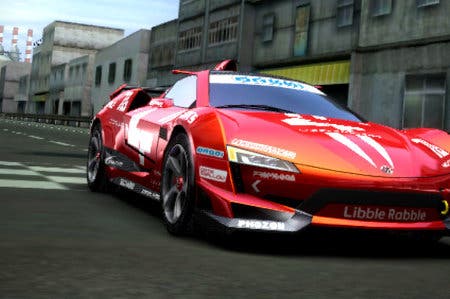

.png?width=291&height=164&fit=crop&quality=80&format=jpg&auto=webp)

